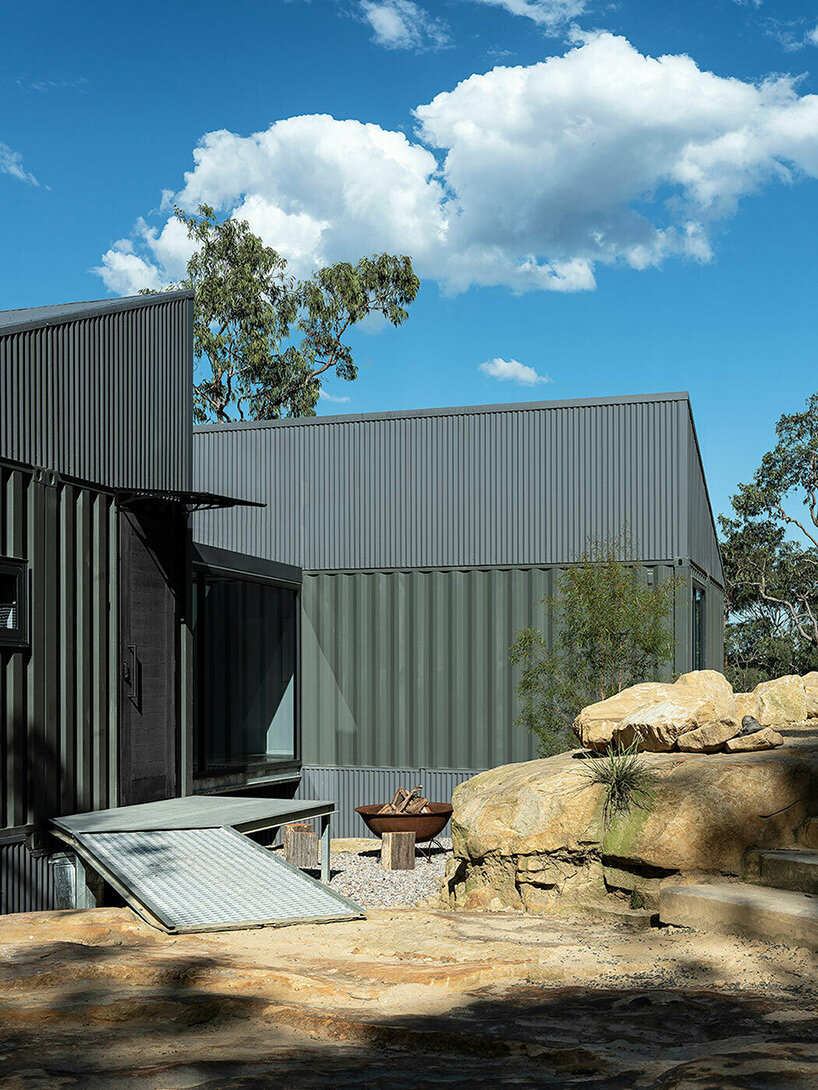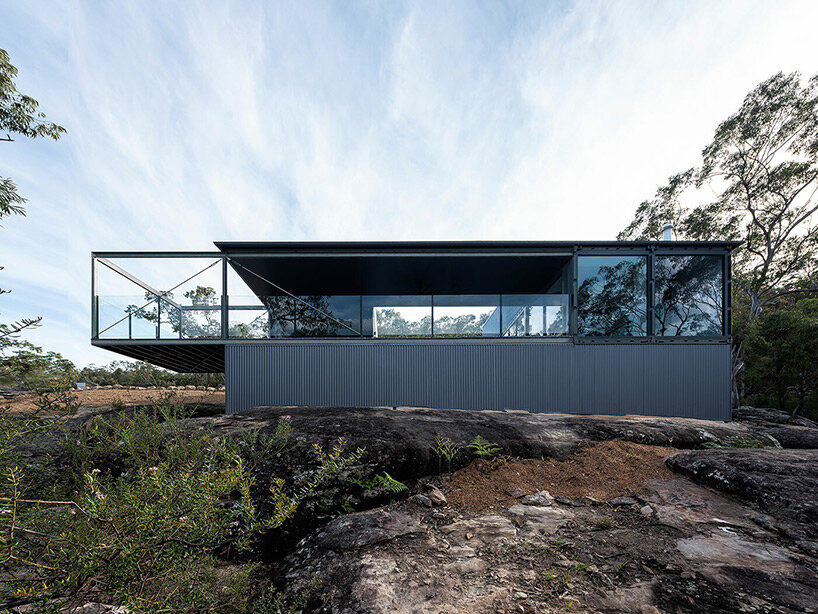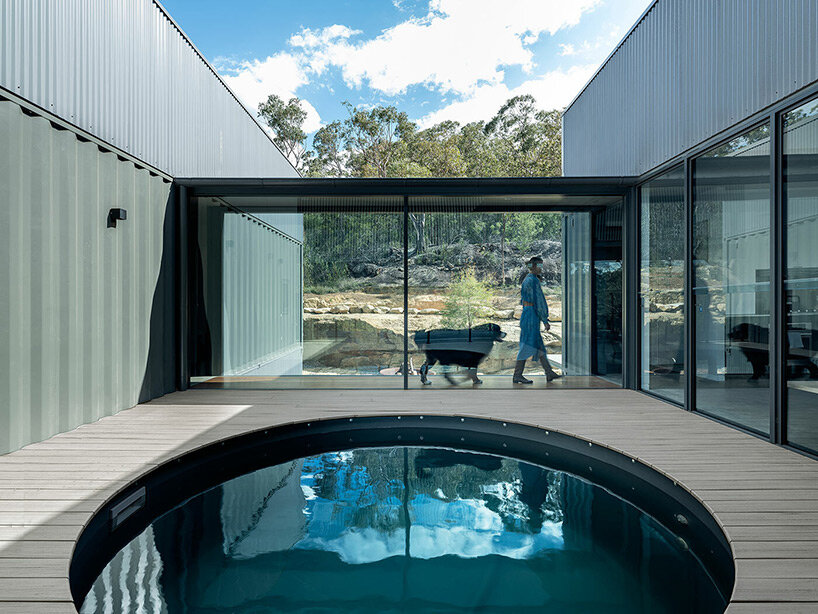benn and penna architects wraps transport container home round round pool in australia
benn and penna unveil ‘colo crossings’ private abode in australia
atop a steep slope above the colo river, in australia, the ‘colo crossings’ private residence by benn and penna architects settles harmoniously into the landscape, bringing nature and man-made forms closer together. conceived as a secluded retreat away from the urban context, the abode ensures the occupants’ withdrawal from the bustling city, as well as their immersion into the rural setting. the project presents itself as a U-shaped shipping container structure that wraps around the residents, while a minimalist color scheme and a series of extended openings allow the vibrant surroundings to take the role of the protagonist.
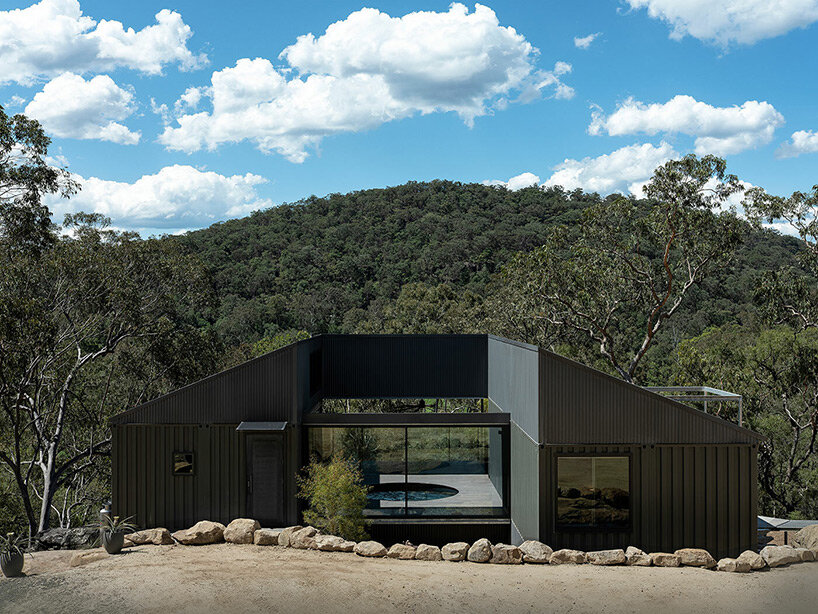
all images courtesy of benn and penna architects
complementing the mottled greens of the landscape
the team at benn and penna architects has opted for a darkened, monochromatic color palette to form a residence that settles respectfully among the mottled greens of the landscape, complementing its bright tones. the minimalist dwelling emerges on top of the hill as a tri-toned horizontal structure: a black platform is set on the rocky terrain, followed by the green containers, and topped with a silvered roofscape. the architects have utilized the humble and efficient structure of the shipping container to craft a unique and celebrated place of retreat.
the project focuses on providing occupants with generous views of the surroundings, by incorporating large openings, and a prominent glazed walkway. the U-shaped floor plan features three bedrooms, two bathrooms, as well as an open plan kitchen and living room, which wraps itself around the occupants. within the interior, the exposed concrete flooring and the plywood kitchen are designed as a nod to the raw, unchanged surroundings.
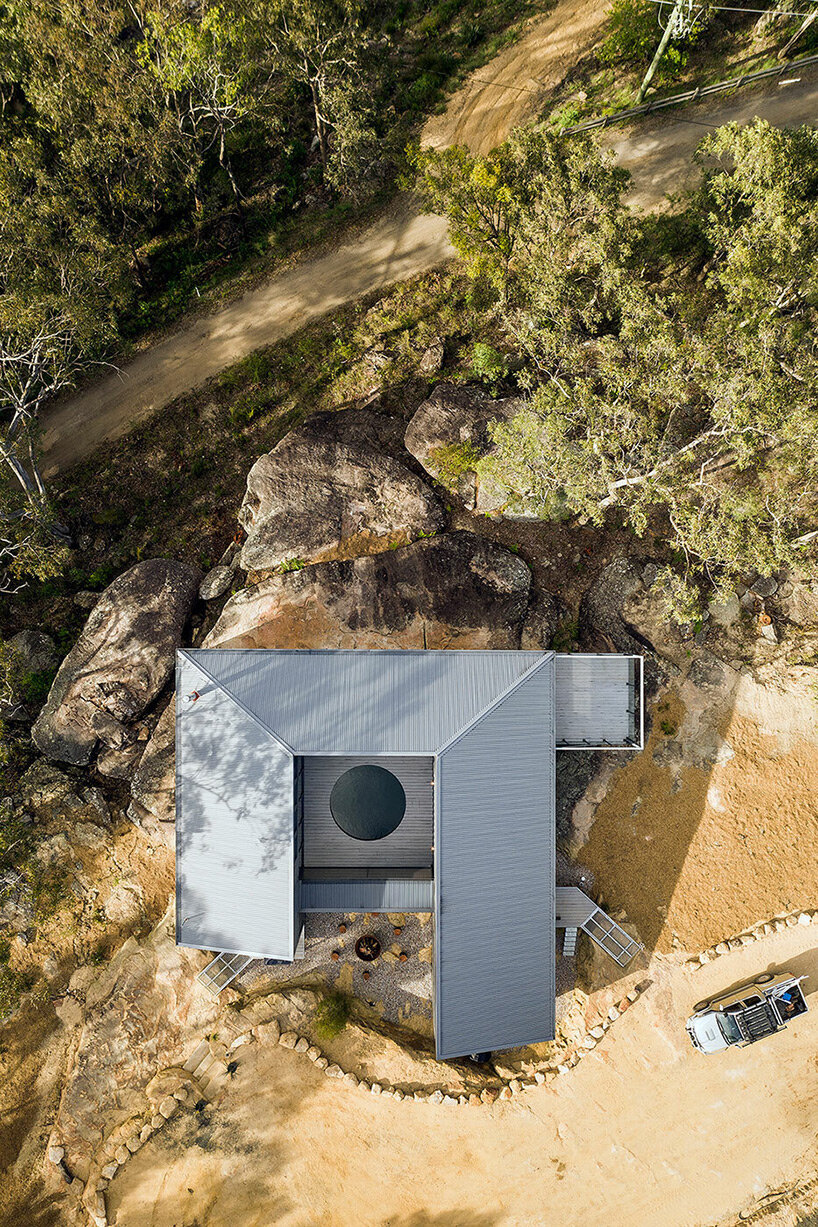
focusing on resourcefulness, water accountability, and safety
taking budget limitations into consideration, benn and penna architects have adopted resourcefulness as their main approach. the house is composed of ready-made containers, exposed structural members, thus minimizing costs and facilitating construction. the pre-existing stone bedrock serves as a natural footing for the steel structure which anchors into the rock, providing for a robust residence that will withstand the frequent landslides of the area.
the rural setting and bushfire regulations of the area have led the architects to also focus on self-collection and water accountability. the structure incorporates a peaked roof, while a series of water tanks collect rainwater for consumption. in addition, a circular pool tank is installed in the center of the dwelling, ensuring protection in the event of a fire.
